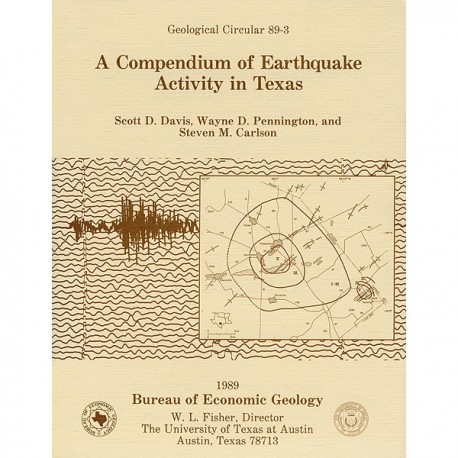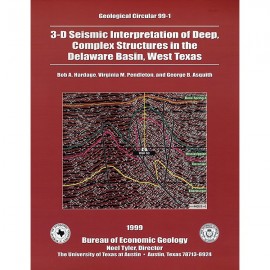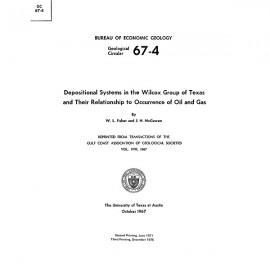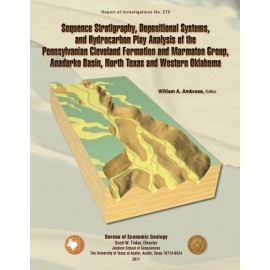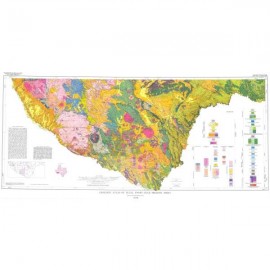Geological Circulars
-
Books & Reports
- Reports of Investigations
- Guidebooks
- Udden Series
- Geological Circulars
- Down To Earth
- Atlases of Major Oil and Gas Reservoirs
- Texas Memorial Museum Publications
- Environmental Geologic Atlas of the Texas Coastal Zone
- Mineral Resource Circulars
- Other Reports
- Seminars and Workshops
- Handbooks
- Submerged Lands of Texas
- Symposia
- Annual Reports
- Open File Reports
-
Maps & Cross Sections
- Thematic Maps
- Miscellaneous Maps, Charts & Sections
- Geologic Atlas of Texas
- STATEMAP Project Maps
- Geologic Quadrangle Maps
- Cross Sections
- Highway Geology Map
- Energy and Mineral Resource Maps
- Shoreline Change and Other Posters
- Wilcox Group, East Texas, Geological / Hydrological Folios
- Bouguer Gravity Atlas of Texas
- River Basin Regional Studies
- Featured Maps
- Posters
- Teachers & the Public
-
Geological Society Publications
- Gulf Coast Association of Geological Societies
- Alabama Geological Society
- Austin Geological Society
- Corpus Christi Geological Society
- Houston Geological Society
- Lafayette Geological Society
- Mississippi Geological Society
- New Orleans Geological Society
- South Texas Geological Society
- GCS SEPM Publications
- Historic BEG & UT Series
GC8903. A Compendium of Earthquake Activity in Texas, by S. D. Davis, W. D. Pennington, and S. M. Carlson. 27 p., 4 figs., 3 tables, 4 appendices, 1989. ISSN: 0082-3309. Print.
To purchase this publication as a PDF download, please order GC8903D.
ABSTRACT
A comprehensive review of Texas earthquakes from 1847 to 1986 has revealed 106 earthquakes of magnitude 3 or greater; of these, 24 are earthquakes for which reports of damage are available, and 1 was responsible for a human fatality. All known reports on Texas seismicity are incorporated in this circular, including original "felt" (eyewitness) reports from contemporary newspapers and other sources.
In West Texas, prominent seismic activity has occurred in the El Paso, Valentine, and Panhandle regions. Earthquakes near El Paso may be related to Quaternary faults of the southern Rio Grande rift system. Earthquakes in the Valentine area, including the largest known Texas earthquake (magnitude of 6.0), are associated with the extensional tectonics of the Basin and Range province. Most earthquakes in the Texas Panhandle overlie the buried Amarillo Uplift, where the present stress regime has probably reactivated a failed rift arm of Early Cambrian age. Although the largest known Panhandle earthquake had a magnitude of 5.4, the potential exists for larger magnitude earthquakes in the Panhandle.
In East Texas, minor isostatic adjustments or flexure due to sediment loading in the Gulf of Mexico Basin may be the driving force behind many of the earthquakes. We subdivide earthquakes in this region into four distinct groups. One group occurs along the Ouachita Belt; the largest of these was the magnitude 4.2 Trout Switch earthquake of 1934. A second group includes shocks in the Gulf Coastal Plain between Houston and Austin. Salt dome growth may cause these events, which have magnitudes of as much as 3.8. A third group of East Texas earthquakes occurred near Hemphill in 1964; the largest of these had a magnitude of 4.4. A final group of earthquakes, including the 1891 Rusk event, is associated with the Mt. Enterprise fault system.
Oil and gas field operations may have induced some Texas earthquakes. Waterflooding may have induced earthquakes in the Central Basin Platform near Kermit (magnitudes to 4.1) and in the Midland Basin near Snyder (magnitudes to 4.6). Hydrocarbon withdrawal may have produced the 1932 Mexia (magnitude of 4.0) and the 1957 Gladewater (magnitude of 4.7) earthquakes. More direct evidence links earthquakes near Fashing and Pleasanton (magnitudes to 3.6 and 3.9, respectively), to the lowering of fluid pressures in the Fashing gas and Imogene oil fields.
Other events in the history of Texas seismicity deserve mention. First, several large earthquakes from neighboring regions produced macroseismic effects in Texas. Notable among these events are an 1882 Oklahoma earthquake, once thought to have occurred in Texas; the 1887 Sonora, Mexico, earthquake; and the 1964 Alaska earthquake. Second, previous authors have mistakenly classified several explosions and sonic booms as earthquakes. Other erroneous data include earthquakes previously listed with incorrect dates, earthquakes "generated" by spurious combinations of seismic arrivals, and events that are probably apocryphal in origin.
Keywords: damage, earthquakes, isoseismic maps, seismicity, seismic risk, seismotectonics, southwestern U.S., Texas
Citation
Davis, S. D., Pennington, W. D., and Carlson, S. M., 1989, A Compendium of Earthquake Activity in Texas: The University of Texas at Austin, Bureau of Economic Geology, Geological Circular 89-3, 27 p.
